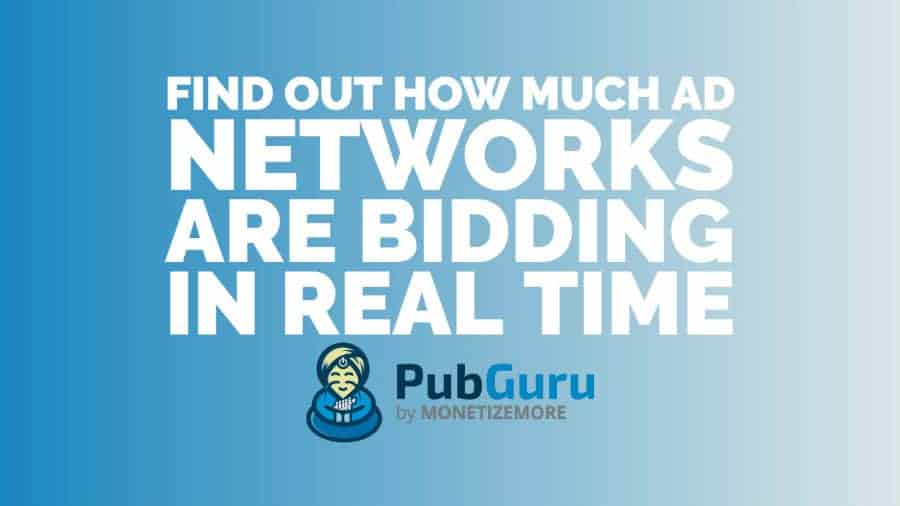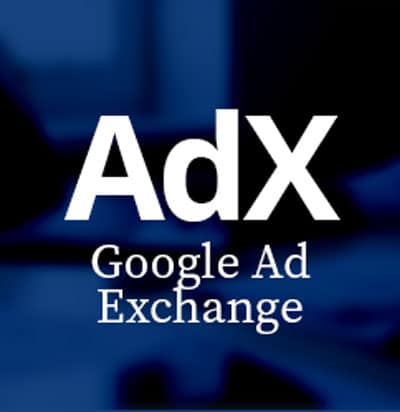
This post was most recently updated on March 11th, 2025
As of 2024, the global real-time bidding market was valued at approximately 16 billion USD, reflecting a compound annual growth rate (CAGR) of 16.0% through 2030.
This growth is driven by the increasing demand for personalized advertising, as advertisers leverage user data to enhance ad relevance and engagement. The rise of mobile advertising has further fueled this trend, with mobile devices becoming the primary platform for RTB due to their extensive use for internet access and social media engagement.
Publishers can benefit significantly from this trend by utilizing RTB to maximize their inventory’s value. In real-time auctions, bids can start as low as $0.001 per impression, depending on the ad network and targeting options available.
This dynamic bidding environment allows publishers to optimize their ad placements effectively, ensuring they receive competitive rates for their inventory while also providing advertisers with a platform to reach their desired audience efficiently. As publishers navigate this complex ecosystem, understanding how much ad networks are bidding in real time will empower them to make informed decisions that enhance their advertising strategies and overall revenue potential.
For now, let me show you how to get a handle on your bidders without breaking a sweat.
Real-time bidding (RTB) is a method of buying and selling online advertising impressions through a real-time auction. Advertisers use RTB to buy ad impressions on a per-impression basis rather than buying ad space in bulk. In real-time bidding, ad impressions are auctioned off in real-time, and advertisers bid on them based on their targeting parameters and the value they place on each impression.
Before we dive deeper into RTB, let’s take a quick look at how online advertising has evolved over the years. In the early days of online advertising, advertisers would typically buy ad space in bulk from a publisher or ad network. They would pay a fixed price per ad unit, regardless of whether or not the ad was actually viewed by a user. This model is often referred to as “direct buying.”
Over time, advertisers began to look for more efficient ways of buying ad space. They wanted to ensure that their ads were reaching the right audience and that they were only paying for ad impressions that were actually viewed by users. This led to the development of various ad targeting technologies, such as demographic targeting and contextual targeting.
As ad targeting technology evolved, so did the way advertisers purchased ad space. The rise of programmatic advertising allowed advertisers to automate the process of buying and selling ad impressions. Programmatic advertising refers to the use of software to buy and sell advertising space. This process allowed advertisers to target their ads to specific audiences more effectively, and it also made the buying and selling process more efficient.
Real-time bidding differs from traditional advertising methods in several key ways. In traditional advertising, advertisers often negotiate fixed rates with publishers or ad networks. They will typically buy ad space in bulk, with little or no targeting capabilities. In contrast, RTB allows advertisers to bid on each ad impression individually, using sophisticated targeting techniques to ensure that their ads are reaching the right audience.
With RTB, ad impressions are auctioned off in real-time. Advertisers can bid on each impression based on various criteria, such as the user’s location, device type, or browsing history. This allows advertisers to target their ads more effectively and only pay for ad impressions that are likely to result in conversions or other desired actions.
Real-time bidding has revolutionized the online advertising industry, providing advertisers with a more efficient and effective way to reach their target audience. With the ability to bid on each ad impression individually, advertisers can ensure that they are only paying for ad space that is likely to result in a conversion or other desired action. This has led to increased efficiency and effectiveness in online advertising campaigns, as well as increased revenue for publishers and ad networks.
Another benefit of RTB is that it allows for real-time optimization of ad campaigns. Publishers can use data from the auction process to adjust their bidding strategies and targeting parameters in real-time, ensuring that their ads are reaching the right audience at the right time. This can lead to higher conversion rates and a better return on investment for advertisers.
Overall, real-time bidding is a powerful tool for advertisers and publishers alike. It allows for more efficient and effective programmatic advertising campaigns, while also providing publishers and ad networks with a new revenue stream. As technology continues to evolve, it will be interesting to see how RTB continues to shape the online advertising industry.
The real-time bidding (RTB) ecosystem is a complex network of platforms and technologies that enable advertisers to purchase ad inventory in real-time bidding auctions. The ecosystem includes demand-side platforms (DSPs), supply-side platforms (SSPs), ad exchanges, and data management platforms (DMPs).
Demand-side platforms (DSPs) are essential components of the RTB ecosystem. DSPs provide advertisers with a single interface to manage their advertising campaigns across multiple channels, including display, video, mobile, and social media. DSPs use sophisticated algorithms to optimize ad campaign performance and ensure that ad impressions are purchased at the optimal price.
One of the key advantages of using a DSP is the ability to target specific audiences. DSPs allow advertisers to target their ads based on a wide range of criteria, including demographics, interests, and behaviors. This targeting capability helps to ensure that ads are shown to the right people at the right time, which can lead to higher engagement rates and better campaign performance.
Supply-side platforms (SSPs) are another critical component of the RTB ecosystem. SSPs help publishers to maximize their revenue by allowing them to auction off their ad inventory to the highest bidder. SSPs provide publishers with a single platform to manage their ad inventory across multiple demand sources, including ad exchanges and DSPs.
SSPs use advanced algorithms to determine the optimal price for each ad impression based on factors such as the size and placement of the ad, the audience segment being targeted, and the historical performance of similar ads. This ensures that publishers are able to earn the maximum possible revenue from their ad inventory.
Ad exchanges are the central marketplace for buying and selling ad impressions in the RTB ecosystem. Ad exchanges allow advertisers to bid on ad impressions from multiple publishers and ad networks in a single platform. Ad exchanges provide advertisers with access to a large amount of ad inventory, enabling them to target their ads effectively across multiple channels.
Ad exchanges use real-time bidding to determine the price of each ad impression. Advertisers submit bids for each impression, and the highest bidder wins the right to display their ad. This ensures that ad inventory is sold at the optimal price, maximizing revenue for publishers and ensuring that advertisers get the best possible value for their ad spend.
Data management platforms (DMPs) are used to manage and analyze large volumes of data collected from various sources, including online activity, demographics, and social media. DMPs enable publishers to create highly targeted audience segments, which can be used to optimize ad campaign performance and improve audience engagement.
DMPs use sophisticated algorithms to analyze data and create audience segments based on factors such as demographics, interests, and behaviors. Overall, the RTB ecosystem is a complex and dynamic network of platforms and technologies that enable advertisers to purchase ad inventory in real-time bidding auctions.

Ad impressions play a critical role in the RTB process. An ad impression refers to the moment when an ad is displayed to a user. Each ad impression is unique and is auctioned off individually in real-time bidding auctions. Advertisers bid on ad impressions based on their targeting criteria and the value they place on each impression.
When an ad impression becomes available, advertisers can bid on it in real-time. Advertisers bid on each impression individually, using their own bidding algorithms to determine the optimal bid amount. The highest bidder wins the auction and has their ad displayed to the user.
Once an auction is won, the winning ad is displayed to the user. Ad placement is determined by various factors, including the ad’s targeting parameters, the user’s browsing history, and the website’s content. The winning bidder pays the price they bid for the ad impression, and the ad is displayed to the user.
This report provides data on how your ads perform compared to competitors. It shows metrics like impression share, average position, and overlap rate, which can give insights into the competitive landscape and help you estimate winning bids based on competitor performance.
This tool allows you to view ads run by specific advertisers. Although it doesn’t show bid amounts directly, you can analyze the ad copies and formats used by competitors, which may correlate with their bidding strategies.
Conduct manual searches for your competitors’ ads using relevant keywords. By clicking on the three dots next to their ad titles in search results and selecting “More ads,” you can examine their ad strategies and potentially infer their bidding behavior based on visibility and frequency.
To view real-time bids and non-winning bids in the context of digital advertising, you can follow these steps:

Platforms like Google Ad Exchange (AdX) provide access to real-time bidding data. By integrating with these exchanges, you can monitor the bidding process for your ad inventory. They typically offer APIs that allow you to retrieve bid information, including winning and losing bids.
If you are working with a demand-side platform, you can gain insights into the bids placed by advertisers. Many DSPs provide reporting tools that show not only the winning bids but also the non-winning bids for each impression. This data helps you understand market dynamics and optimize your bidding strategies.
Familiarize yourself with real-time bidding protocols such as the OpenRTB specification. These protocols define how bid requests and responses are structured, allowing you to capture detailed information about each auction, including bid amounts from various advertisers.
Use analytics tools provided by your ad server (e.g., Google Ad Manager) to track auction outcomes. These tools often include reports that detail which bids won and lost, along with the corresponding bid amounts and other relevant metrics.
Participate in industry forums or networks where professionals share insights about real-time bidding strategies and outcomes. Engaging with peers can provide anecdotal evidence of typical bid amounts and competitive practices.
By employing these methods, you can effectively monitor real-time bids and understand ad inventory optimization for better revenue generation.

With over ten years at the forefront of programmatic advertising, Aleesha Jacob is a renowned Ad-Tech expert, blending innovative strategies with cutting-edge technology. Her insights have reshaped programmatic advertising, leading to groundbreaking campaigns and 10X ROI increases for publishers and global brands. She believes in setting new standards in dynamic ad targeting and optimization.
10X your ad revenue with our award-winning solutions.